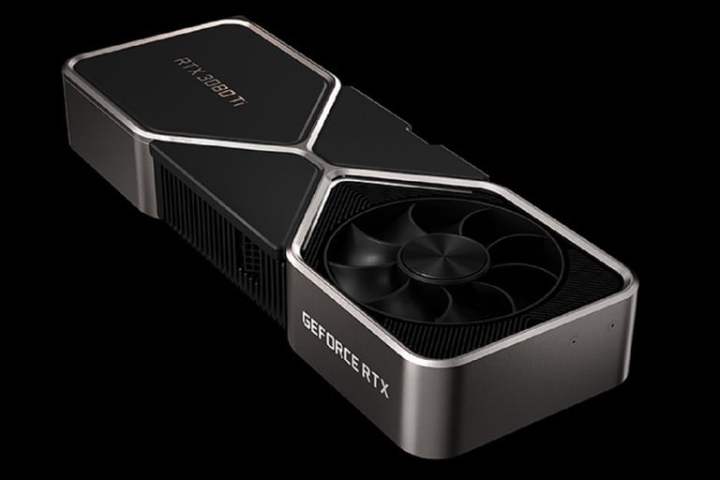Buying a graphics card isn’t just expensive, it can be confusing. There are heaps of different names, models, and suffixes, which can make it hard to decipher which graphics processing units (GPUs) are best. The “Ti” designation that some Nvidia graphics cards come with is a good example of that. Here’s a short guide to help you break through these walls of naming convention.
What does Ti actually mean? It means it’s a little better than the one without it.
What does Ti mean in a GPU?

Ti is a designation that is specific to the Nvidia brand of GPUs and is essentially short for “Titanium.” When used in a Nvidia GPU product name, the Ti label is part of Nvidia’s naming scheme for its GPUs and is used to indicate that a given graphics card is an upgraded or better performing model than its regular, or non-Ti, predecessor.
For example, let’s take a look at some of the differences between two of Nvidia’s graphics cards: The GeForce RTX 3080 and the GeForce RTX 3080 Ti. When it comes to their specs, they have many of the same features, but the 3080 Ti version has received a few upgrades over the 3080:
- It has more CUDA cores: The 3080 Ti has 10,240, and the 3080 only has 8,704.
- It has more memory: The 3080 Ti has 12GB of memory, while the 3080 only has 10GB.
This is true for other Ti models, like the 3060 Ti and 3070 Ti, though it’s not linear. Some models, like the 3070 Ti, aren’t as big an upgrade over their non-Ti counterparts.
Does it matter if your GPU or graphics card is labeled as Ti?
It depends. If the cost of a new graphics card is your main concern, non-Ti GPUs tend to cost less than Ti GPUs. For example, consider the GeForce RTX 3060. Nvidia’s reference pricing for the 3060 starts at $329, while the 3060 Ti starts at $399. The 3080 family of GPUs shows an even greater disparity in price: The GeForce RTX 3080 starts at $699, and the 3080 Ti starts at $1,199.
But if performance is more important to you and you have the budget for it, you may want to consider investing in a Ti GPU. Additional performance is always useful, and these cards can often be almost as fast as the next model up while being substantially cheaper — as is the case with the 3080 Ti and the RTX 3090. But it’s very dependent on the GPU. Be sure to research individual reviews of the model you’re considering before buying.
Which is the best Ti graphics card?
The RTX 3080 Ti is currently the most powerful Ti graphics card and is only really beaten (and only then, slightly) by the Nvidia RTX 3090 and AMD RX 6900 XT. This was the same for the last generation of Nvidia cards, too, where the RTX 2080 Ti ruled the roost for two years before being overtaken by the RTX 3000 generation of graphics cards.
Editors' Recommendations
- AMD’s multi-chiplet GPU design might finally come true
- 12 best graphics cards of 2024: the GPUs I’d recommend to any PC gamer
- Best GPU deals: MSI, XFX, EVGA
- I was dreading the RTX 5090 until I heard this rumor
- This might be the most ridiculous GPU I’ve ever seen


